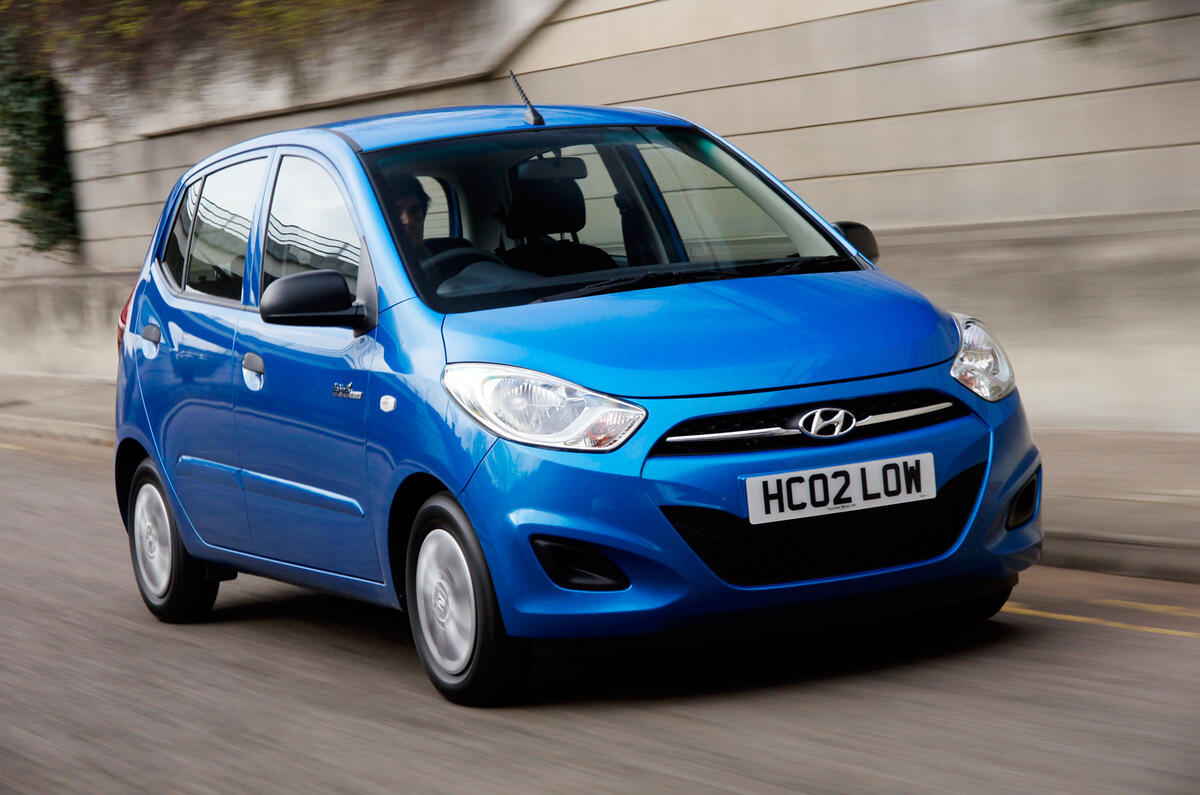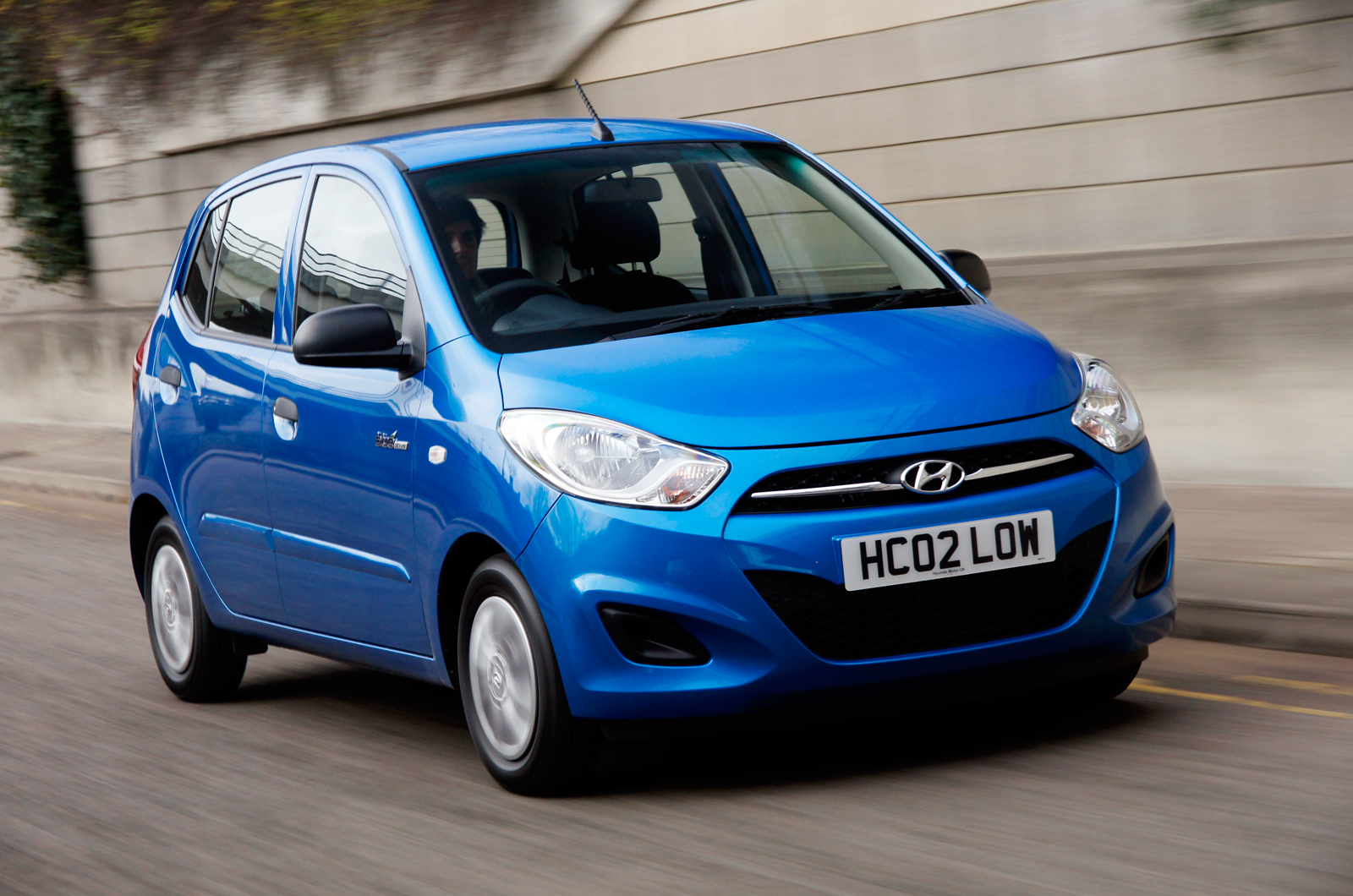Hyundai claims the i10 is “small, but packed with luxury”. Standard equipment is not to be sniffed at, but where the i10’s pretensions towards luxury fall short is in the design, feel and general ambience of the cabin.
There’s nothing inherently wrong with the cabin’s layout or with the way it looks, but neither is there any real flair or spark to the design. The interior is a sea of dark-hued plastics of varying texture, and there’s very little that’s bright, innovative or striking about it. Compared with a Fiat Panda’s or Volkswagen Up’s interior, the i10 seems drab and uninspiring.
There’s little doubt about the Hyundai’s build quality – it seems durable enough and is backed up by a five-year warranty – but the feel of it again disappoints slightly. The hollow-sounding, grainy, shiny plastics feel far more workmanlike than anything else.
Space, however, is generous. You should be able to accommodate four average-sized adults in adequate comfort even over long distances, although taller or longer-legged occupants might prefer shorter journeys. Head and legroom are good, but try to squeeze three into the back and you’ll suffer from a severe lack of elbow room. Better to keep the rear for children, where the standard Isofix seatbelt points will come in handy.
The 60/40-split folding rear seats are also useful for transporting longer items, as the seats-up boot length is pretty short. Higher spec models also get an underfloor storage tray in the boot which, although it raises the main boot floor by a few inches, is extremely useful for oddments and clutter that would otherwise roll around in the rear.
The rubber steering wheel of entry-level versions leaves a slightly unpleasant smell on your hands and is also a little abrasive. The top-spec model gets a leather-covered wheel, which is worth having.












